Past Webinars in the Water Research Series
- 2024 Water Research Webinars
- UV Filters in Sunscreens and The Impacts on Aquatic Organisms
- Where The Rubber Meets The Road: Emerging Environmental Impacts of Tire Wear Particles And Their Chemical Cocktails
- DNA-Based Water Quality Monitoring Methods to Support Aquatic and Human Health
- Effectiveness of Nutrient Management for Reducing Nutrient Losses from Agricultural Fields
- 2023 Water Research Webinars
- 2022 Water Research Webinars
- Real-Time Risk Characterization Tool for Harmful Algal Blooms: Ohio River
- Water Toxicity Sensor Challenge - Phase One Winners
- Integrated Approaches in Community Nonpoint Source Nutrient Management
- Green Infrastructure: Ecosystem Benefits and Applications
- Assessing the Toxicity of PFAS Chemicals to Aquatic Organisms
- 2021 Water Research Webinars
- Effects of Total Nitrogen and Total Phosphorus on Chlorophyll a Concentrations in Flowing Waters
- Valuing Aquatic Ecosystem Health at a National Scale: Modeling Biological Indicators Across Space and Time
- Road Salts and Freshwater Salinization Syndrome: An Emerging Water Quality Threat
- Community-enabled Lifecycle Analysis of Stormwater Infrastructure Costs (CLASIC): Tool Functionality and Case Studies
- Enhanced Aquifer Recharge: Influence of Stormwater on Groundwater Quality and Aquifer Recharge
- Fit-for-Purpose Water Updates and Life Cycle Comparisons of Non-Potable Water Reuse Scenarios
- Water Research Webinars 2020 and Earlier
About Past Webinars
Closed-captioned recordings and descriptions of the webinars are provided below. Certificates of attendance cannot be provided for viewing webinar recordings.
Learn more about the Water Research Webinar Series.
2024 Water Research Webinars
UV Filters in Sunscreens and The Impacts on Aquatic Organisms
Watch the Recording (October 30, 2024)
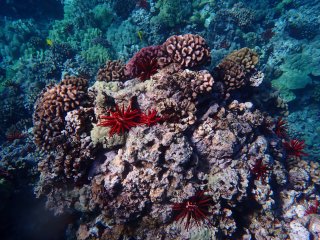
This talk provides background on the emerging concern around UV filters (UVFs) and their potential impacts to coral reefs, provides an overview of the state of the science, and discusses where advancements need to be made for a defensible environmental risk assessment. EPA’s Office of Research and Development is working with scientists across sectors to communicate data needs for defensible analyses of potential risks of UVFs in marine, estuarine, and freshwater ecosystems. In further efforts to advance the science, researchers in ORD’s Center for Environmental Measurement and Modeling are evaluating effects of UVFs on marine and estuarine species, including novel methods development that assess coral sensitivity to UVFs and advances in analytical chemistry of these challenging compounds. These steps demonstrate EPA’s responsiveness to the NASEM 2022 report “Review of Fate, Exposure, and Effects of Sunscreens in Aquatic Environments and Implications for Sunscreen Usage and Human Health”, while advancing the science and data needs to protect coral reefs and other at-risk aquatic communities from UVFs.
Presenter: Sandy Raimondo, Ph.D., EPA Office of Research and Development
Where The Rubber Meets The Road: Emerging Environmental Impacts of Tire Wear Particles And Their Chemical Cocktails

Watch the Recording: Where The Rubber Meets The Road (June 26, 2024)
Each year, billions of automobile tires are produced, and hundreds of millions become waste, posing a significant environmental and human health risk. Tires are a highly engineered and complex source of pollutants, including heavy metals, plastics, polycyclic aromatic hydrocarbons, and other compounds that can be toxic alone or as chemical cocktails. As tires wear, they release pollutants through atmospheric, aquatic, and terrestrial pathways, and comprehensive clean-up solutions are needed to reduce the risk of these pollutants. This presentation covers the scope and scale of tire pollution and discuss efforts across the US EPA and globally to address the issue of tire-related pollution.
Presenter: Paul Mayer, Ph.D., EPA Office of Research and Development
DNA-Based Water Quality Monitoring Methods to Support Aquatic and Human Health

Watch the Recording: DNA-Based Water Quality Monitoring Methods to Support Aquatic and Human Health (April 24, 2024)
1. Becoming Uncultured: Daily Recreational Water Quality Monitoring and Public Notification at Chicago Beaches Using qPCR
Beach water monitoring and notification is vital for protecting the health of beachgoers. Traditionally, beach monitoring has relied on culturing fecal indicator bacteria using methods that require 18-24 hours to generate results, thus providing outdated information for current beach management decisions. In the 2012 Recreational Water Quality Criteria (RWQC), the USEPA endorsed a qPCR method for rapidly measuring enterococci. Since 2015, through a partnership between Chicago Park District (CPD) and the University of Illinois Chicago School of Public Health (UIC SPH), Chicagoans have daily beach monitoring notifications typically within four hours. Having a well-trained team and consistent daily schedule proved essential for delivering timely and high-quality qPCR results to guide same-day beach management decisions. Given that culture-based results from the previous day can often lead to erroneous beach management decisions, the rapid molecular method should be regarded as the benchmark for public health protection. In this presentation, the discussion focuses on how, following a two-year pilot program of rapid molecular testing of beach water samples, in 2017, Chicago became the first large U.S. city to issue same-day water-quality warnings for all its public recreational beaches and has successfully done so every year after that. The CPD and UIC SPH partnership illustrates that true daily beach monitoring using same-day water quality results is an achievable goal.
Presenter: Abhilasha Shrestha, PhD, University of Illinois Chicago
2. Standard Control Material for Quantitative Real-Time PCR Recreational Water Quality Monitoring
Fecal pollution remains a significant challenge for recreational water quality managers. The use of quantitative real-time PCR (qPCR) methods is increasing, allowing for same day beach water quality public notification and identification of key fecal pollution sources. However, widespread implementation requires access to a high-quality standard control material. This presentation describes a collaboration between the U.S. Environmental Protection Agency and the National Institute of Standards and Technology to develop Standard Reference Material® 2917 (SRM 2917), SRM 2917 “fit for purpose” performance assessment, and implications for qPCR recreational water monitoring implementation.
Presenter: Orin Shanks, Ph.D., EPA Office of Research and Development
Effectiveness of Nutrient Management for Reducing Nutrient Losses from Agricultural Fields

Watch the Recording: Effectiveness of Nutrient Management for Reducing Nutrient Losses from Agricultural Fields Webinar (February 28, 2024)
Nutrients in agricultural areas are managed based on the 4Rs of nutrient stewardship: apply the right nutrient source, with the right rate, at the right time, in the right place. However, nutrient discharge is an ongoing environmental concern, and management practices for water quality improvements present many challenges due to complex processes and mechanisms in nutrient cycling and other factors associated with agricultural conservation practices such as residue and tillage management.
This presentation discusses two investigations focused on nitrogen (N) and phosphorus (P) and emphasizes the need for government agencies to work together to address potential economic losses due to implementation of lower fertilizer rates for water quality improvement.
Presenter: Yongping Yuan, EPA Office of Research and Development
2023 Water Research Webinars
An Introduction to EPA's Enhanced Aquifer Recharge (EAR) Research
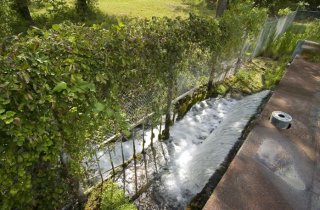
Watch the Recording: An Introduction to EPA's Enhanced Aquifer Recharge Research (November 28, 2023)
Enhanced Aquifer Recharge (EAR) is one potential means to capture water, such as stormwater, wastewater, etc., and use the captured water to increase groundwater supply. In 2021, EPA researchers began an EAR study in the sole-source Arbuckle-Simpson Aquifer in south-central Oklahoma to address several of the research gaps identified in the report. The goals of this research are to understand the fate and transport of contaminants and the potential impacts to water quality EAR could have. Another goal of this research effort is to demonstrate the use of geophysical tools to understand the movement of water in a EAR system within a karst (fractured rock) environment. Lastly, this study will demonstrate the types of characterization and monitoring that will be needed for successful EAR implementation and operation.
This presentation presents techniques, difficulties, and challenges of monitoring stormwater movement following infiltration in a karst aquifer system. Understanding of how water is moving and the monitoring needs is crucial to the understanding of potential impacts to groundwater quality and protection of groundwater.
Presenter: Doug Beak, EPA Office of Research and Development
Methods and Tools to Support Aquatic and Human Health

Watch the Recording: Methods and Tools to Support Aquatic and Human Health (October 25, 2023)
1. How Does Chemical Structure Affect the Toxicity of Per- and Polyfluoroalkyl Substances (PFAS) to Aquatic Life?
This presentation will discuss recent findings that sublethal toxicity is strongly related to both fluorinated chain length and the structure of the non-fluorinated “head” group. These findings, combined with information on bioaccumulation, suggest that multiple mechanisms of toxic action exist. Mixture experiments to date have indicated additive, but not synergistic, interactions of PFASs within and between classes. Implications of these findings are discussed, along with ongoing research directions to better understand risks to aquatic life.
Presenter: Sarah Kadlec, Ph.D.
2. RapidTox Workflows for Chemical Decision-Making
RapidTox has been developed as a standalone tool consisting of targeted workflows that draw from various databases and existent datastreams, such as ToxValDB, ToxCast, and ExpoCast, to deliver fit-for-purpose information in support of decision-maker needs such as emergency response, human health assessment, and chemical mixtures assessment. RapidTox workflows provide a flexible decision-based logic that surfaces and rapidly assembles chemistry, biology/toxicology, and exposure data while incorporating expert input in the evaluation of chemicals of potential concern.
Presenter: Jason Lambert, Ph.D., DABT
Reducing Nitrogen in Groundwater Through Enhanced Onsite Wastewater Treatment and Wetland Restoration

Watch the Recording: Reducing Nitrogen in Groundwater (June 28, 2023)
Excess nutrients are a widespread cause of water quality degradation and adverse outcomes for people and ecosystems throughout the United States. Mitigating nutrient pollution can be a complex challenge due to the diffuse nature of sources and regulatory authorities, physical and temporal distance between sources and receptors, and the performance, availability, and social acceptability of interventions. In Cape Cod, Massachusetts, stakeholders are working within this context on a range of traditional and alternative approaches to reduce nitrogen loading to impaired estuaries. Here the nitrogen source is primarily onsite wastewater treatment systems. Enhanced septic systems and wetland restoration are two biogeochemically related approaches for reducing nitrogen loads to sensitive water bodies. They have the potential to better denitrify effluent prior to subsurface discharge or intercept legacy pollution in groundwater. The success of either approach with respect to this objective, however, depends on design and implementation.
This webinar discussed efforts among EPA and a group of multi-institutional and multi-sectoral partners to make advancements in denitrifying septic system technologies and wetland restoration of cranberry bogs to help stem pervasive groundwater pollution.
Presenter: Laura Erban, Ph.D.
VELMA Watershed Modeling in the Puget Sound

Watch the Recording: Watershed Modeling in the Puget Sound (April 26, 2023)
In collaboration with University of Washington and NOAA marine ecosystem modelers participating in the new Puget Sound Integrated Modeling Framework (PSIMF) project, ORD’s VELMA watershed modeling team is estimating environmental impacts of alternative future land use and climate change scenarios out to year 2100 for Puget Sound’s major river basins. VELMA is simulating how these scenarios impact terrestrial runoff and loadings of nutrients and toxins to the Puget Sound National Estuary. VELMA’s terrestrial outputs serve as inputs for PSIMF’s marine ecosystem models, being used to estimate impacts of nutrients and toxins on Puget Sound water quality and food web biota, including endangered salmonids and orca. The team’s primary goal is to assist communities, tribes, and state and federal decision makers in determining how much, where, and what kinds of terrestrial and marine ecosystem best management practices are required to achieve target pollutant load reductions to Puget Sound, now and in the future.
Presenter: Bob McKane, Ph.D.
2022 Water Research Webinars
Real-Time Risk Characterization Tool for Harmful Algal Blooms: Ohio River

Watch the Recording: Real-Time Risk Characterization Tool for HABs: Ohio River (November 16, 2022)
This webinar includes a presentation entitled Real-Time Risk Characterization Tool for Harmful Algal Blooms which discusses a risk characterization tool/web application that was developed in response to two large harmful algae bloom (HAB) events on the Ohio River in 2015 and 2019. The tool has been in use by the Ohio River Valley Water Sanitation Commission for two bloom seasons, serving to predict the probability of HABs based on river flow conditions and as a water data monitoring utility.
This presentation also provides an overview of the science of large river HABs and the historical data that was used to develop a risk characterization framework and then a probabilistic prediction of HABs for 20 locations spanning the entire length of the Ohio River. Next, a general overview of the web-based application will be given, including details about data acquisition, data management, and the underlying statistical models. Finally, perspectives on using the tool to actively monitor the river’s water quality and make decisions about HAB sampling and risk communication will be given by the tool’s primary user.
Presenters: Chris Nietch, Ph.D., EPA Office of Research Development; Leslie Gains-Germain; Greg Youngstrom, Ohio River Water Sanitation Commission
Water Toxicity Sensor Challenge-Phase One Winners
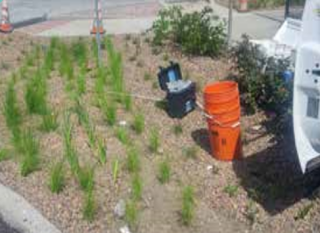
Watch the Recording: Water Toxicity Sensor Challenge - Phase One Winners (October 11, 2022)
To help meet the need for better ways to monitor toxicity in water, EPA and partners launched the Water Toxicity Sensor Challenge. The challenge calls on innovators to develop a sensor that can identify whether there are chemical pollutants and natural toxins in various types of water much faster and less expensively than current lab methods for detecting individual, specific chemicals. Certain chemicals can activate various toxicity pathways inside living cells. This causes a disruption to normal biological processes, like breathing or digestion, which can lead to harmful health effects such as diseases like cancer.
Presenters:
- Cristian Capitanescu, S.C. Ecodet Activ S.R.L company and National Environmental Protection Agency in Romana
- Elisa Michelini, Department of Chemistry “Giacomo Ciamician” of the University of Bologna (Italy)
- Natalie Cookson, Ph.D.
- Valentina Mayorca Gonzalez, student at the Universidad Nacional de Colombia
Integrated Approaches in Community Nonpoint Source Nutrient Management
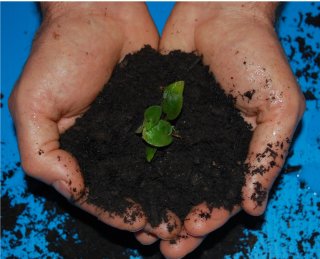
Watch the Recording: Integrated Approaches in Community Nonpoint Source Nutrient Management (August 24, 2022)
This presentation discussed recent research on nutrient inputs, agricultural management and nitrate concentrations in soil solution and groundwater in Oregon’s southern Willamette River valley. In 2012, EPA’s lab in Corvallis was asked by the Oregon Department of Environmental Quality’s Groundwater Management Area (GWMA) lead with to work on nitrogen cycling and groundwater nitrate contamination in this GWMA. This presentation described how and what is communicated with EPA regions, state agencies, crop advisers, and others in the GWMA community about the findings, explanations, implications, and application for the study results. Management of non-point source pollution in groundwater is an important and widespread challenge in many areas of the U.S., and this work could help inform other community-based projects tackling this issue.
Presenters: Jana Compton and J. Renée Brooks, EPA Office of Research and Development
Green Infrastructure: Ecosystem Benefits and Applications
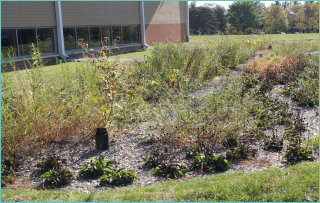
Watch the Recording: Green Infrastructure: Ecosystem Benefits and Applications (May 18, 2022)
This webinar includes two presentations: (1) Monitoring Green Infrastructure Applications and (2) Leveraging Ancillary Benefits from Urban Greenspace. In presentation one, we will see how EPA researchers are monitoring bioinfiltration to better understand the mechanisms that capture and treat stormwater runoff and the conditions for optimal performance. Presenters will discuss (a) a project that is using embedded instrumentation to measure the water movement into, through, and out of a Bioinfiltration system and (b) a long-term study that is monitoring bioinfiltration planting media and plant growth. Presentation two discusses how changes in population growth, urban development, and climate have increased the occurrence of storm water-related problems. While green infrastructure is often proposed as a tool to help manage stormwater in urban areas, other types of greenspace can serve the same function and should be included in stormwater management plans. In addition, research indicates that several other benefits and ecosystem services come from urban greenspace. EPA researchers developed a framework to leverage these social, economic, and environmental benefits while managing stormwater.
Presenters: Michael Borst, Thomas O'Conner (P.E., BCEE), Matthew Hopton (Ph.D.), EPA's Office of Research and Development Center for Environmental Solutions and Emergency Response
Assessing the Toxicity of PFAS Chemicals to Aquatic Organisms

Watch the Recording: Assessing the Toxicity of PFAS Chemicals to Aquatic Organisms (February 23, 2022)
Among the many questions surrounding per- or polyfluoroalkyl substances (PFAS) are their potential effects on aquatic communities. While much of the initial research effort has focused on ecological effects of perfluorooctane sulfonate (PFOS) and perfluorooctanoic acid (PFOA), there is a much wider range of PFAS that can occur in the environment―both as a result of more recently developed compounds and the breakdown products of other PFAS. Effective management of PFAS in aquatic systems requires understanding of the potential effects of a more complete range of PFAS chemicals.
EPA is working to explore the relationships between PFAS toxicity and chemical structure for several aquatic species to help identify and predict the toxicity of PFAS and PFAS mixtures of greatest ecological concern in support of the development of water quality guidelines. This involves measuring the toxicity of PFAS with varying structural features, determining variation in sensitivity across species, and grouping PFAS chemicals by their inferred toxic modes of action (MoA). This webinar will discuss initial findings that sublethal toxicity is strongly related to fluorinated chain length as well as the structure of the non-fluorinated “head” group, and that differences in toxicity of certain PFAS across structures suggest that multiple PFAS MoAs likely exist.
Presenters: David Mount, Ph.D. and Sarah Kadlec, Ph.D., EPA’s Office of Research and Development
2021 Water Research Webinars
Effects of Total Nitrogen and Total Phosphorus on Chlorophyll a Concentrations in Flowing Waters
Watch the Recording: Effects of Total Nitrogen and Total Phosphorus on Chlorophyll a Concentrations in Flowing Waters (October 27, 2021)
Nitrogen pollution and phosphorus pollution are major stresses on stream and river ecosystems globally. Despite general acceptance of nutrient pollution as a problem, understanding the ways that biological communities respond is complicated, in part because conditions in streams and rivers are quite variable. For example, chlorophyll a, a pigment in primary producers, is used to estimate algal biomass and is a widely used measure of biological response to nutrient pollution. However, the response of chlorophyll a to nutrients can depend on environmental context. A compilation and synthesis of research about biological responses to nutrients across environmental contexts is needed to support environmental decisions, including the identification of streams and rivers with unhealthy biological communities and the setting of targets for maintaining or reviving healthy ecosystems.
EPA scientists conducted a systematic review and meta-analysis of 105 published studies to examine the response of primary producers (as measured by sestonic and benthic chlorophyll a) to total nitrogen and total phosphorus concentrations in the water column of streams and rivers, and how that response is affected by other environmental factors. This webinar will discuss the results of this research, implications for environmental decision-making, and forthcoming efforts to expand the analysis to other biological responses.
Presenters: Caroline Ridley, Ph.D. and Sylvia Lee, Ph.D., EPA’s Office of Research and Development, Center for Public Health and Environmental Assessment
Valuing Aquatic Ecosystem Health at a National Scale: Modeling Biological Indicators Across Space and Time
Watch the Recording: Valuing Aquatic Ecosystem Health at a National Scale: Modeling Biological Indicators (September 29, 2021)
EPA estimates the benefits of preserving aquatic resources using the water quality index (WQI). The WQI focuses on metrics related to human use, such as recreation, but fails to fully capture aspects important to nonuse values of aquatic ecosystems, such as existence values. Stated preference surveys can quantify the nonuse values of streams and lakes but require an appropriate index of biological health to be able to measure and compare biological condition.
In a recent effort, EPA researchers identified an appropriate biological health index to be applied in a forthcoming national stated preference survey that will estimate nonuse values of streams and lakes throughout the conterminous United States (CONUS). Through a literature review and focus groups, researchers compared two aquatic indices that are regularly used to quantify biological health by EPA’s National Aquatic Resources Surveys: 1) multimetric indices (MMIs) and 2) the observed-to-expected ratio of taxonomic composition (O/E). This webinar will discuss this comparison, implications for estimating benefits of preserving aquatic resources, and forthcoming work to link O/E with water quality and habitat models, which would forecast changes in O/E resulting from future regulatory action.
Presenters: Chris Moore, Ph.D., EPA’s Office of the Administrator; Jessie Doyle, M.S. Oak Ridge Institute for Science and Education; Ryan Hill, Ph.D., EPA's Office of Research and Development, Center for Public Health and Environmental Assessment
Road Salts and Freshwater Salinization Syndrome: An Emerging Water Quality Threat
Watch the Recording: Road Salts and Freshwater Salinization Syndrome: An Emerging Water Quality Threat (June 30, 2021)
Streams throughout the U.S. and world wide have increased in salinity due to multiple processes, including road salt and human accelerated weathering of impervious surfaces, reductions in acid rain, and other anthropogenic legacies. This freshwater salinization, in turn, mobilizes chemical cocktails via ion exchange and other biogeochemical processes. This webinar will examine fate and transport of salts and chemical cocktails, describe the litany of environmental impacts, and discuss the use of real time sensor data to characterize trends of nutrients and metals using long term data from urban streams in the Chesapeake Bay watershed. Finally, presenters will discuss approaches to managing this growing environmental and health problem.
Presenters:
- Paul Mayer, Ph.D., Pacific Ecological Systems Division in EPA’s Office of Research and Development Center for Public Health and Environmental Assessment
- Tammy Newcomer-Johnson, Ph.D., EPA's ORD Center for Environmental Measurement and Modeling
- Joe Galella, M.S.,, University of Maryland College Park
- Sujay Kaushal, Ph.D., Department of Geology and Earth System Science Interdisciplinary Center at the University of Maryland, College Park
Community-enabled Lifecycle Analysis of Stormwater Infrastructure Costs (CLASIC): Tool Functionality and Case Studies
Watch the Recording: Community-enabled Lifecycle Analysis of Stormwater Infrastructure Costs (CLASIC) Tool (May 26, 2021)
Across the Nation, many communities are addressing stormwater management needs and assessing requirements for implementing management plans. Some considerations during this process include costs associated with aging water infrastructure conveyance systems, the addition of green infrastructure controls, rate payer expectations, and other considerations important to the community. This webinar will feature the new web-based Community-enabled Lifecycle Analysis of Stormwater Infrastructure Costs (CLASIC) tool. The GIS-interfaced CLASIC tool utilizes a life cycle cost framework to support feasibility and planning of stormwater infrastructure at a municipality or watershed scale. Through a summary of case studies spanning all climate regions in the U.S., the presenters will demonstrate how the CLASIC tool can help stormwater professionals, community planners, and local decision makers understand and weigh the estimated costs, reductions in runoff and pollutant loads, and co-benefits of various planning scenarios as they consider stormwater management projects, including under future climate scenarios.
Presenters:
- Harry Zhang, Ph.D., P.E., The Water Research Foundation
- Sybil Sharvelle, Ph.D., Civil and Environmental Engineering Department at Colorado State University
- Jennifer Egan, Ph.D., P.G., University of Maryland Environmental Finance Center
- Tonya Bronleewe, M.S., Environmental Finance Center at Wichita State University
Enhanced Aquifer Recharge: Influence of Stormwater on Groundwater Quality and Aquifer Recharge
Watch the Recording: Influence of Stormwater on Groundwater Quality and Aquifer Recharge (April 28, 2021)
Enhanced aquifer recharge (EAR) has tremendous potential as a process to replenish and supplement existing groundwater supplies. EAR using stormwater, however, also presents a risk of groundwater contamination. In EAR application, it is important to understand not only the quantity of water that can be replenished, but also the potential impacts to water quality.
This webinar will highlight the following ongoing EPA and EPA supported research investigating the application and potential impacts to water quality using EAR technologies: (1) state of the science on information leading to best practices for EAR using stormwater; (2) methods currently being investigated to understand water movement and quality in karst aquifers; and (3) highlights of a recently completed field project supported by EPA to evaluate green infrastructure system pollutant removal performance in the arid Intermountain West and to document the potential for stormwater harvesting and groundwater recovery to enhance water availability in Utah's Salt Lake Valley.
Presenters:
- Thomas Johnson, Ph.D., EPA's Office of Research and Development Center for Public Health and Environmental Assessment
- Doug Beak, Ph.D., EPA's Office of Research and Development Center for Environmental Solutions and Emergency Response
- Ryan Dupont, Ph.D., Department of Civil and Environmental Engineering in the Utah Water Research Laboratory at Utah State University
Fit-for-Purpose Water Updates and Life Cycle Comparisons of Non-Potable Water Reuse Scenarios
Watch the Recording: Fit-for-Purpose Water Updates and Life Cycle Comparisons of Non Potable Water Reuse Scenarios (February 24, 2021)
Onsite non-potable water reuse is a transformative approach that collects locally available water sources, such as wastewater, graywater, stormwater, and rainwater, for decentralized treatment and use in low-exposure applications, such as irrigation and toilet flushing, reducing stress on both potable water supplies and municipal wastewater collection systems. However, care must be taken to manage microbial risks and to avoid burden-shifting with respect to environmental and economic impacts.
This webinar will present updated fit-for-purpose risk assessments and life cycle comparisons of non-potable reuse scenarios comprising different water sources collection scales and onsite end uses, with recent developments including new water quality datasets for rainwater and onsite graywater/wastewater; exposure sensitivity analyses examining model applicability to additional end uses; and integrated assessment of building-scale reuse options. In addition, presenters will share a new EPA tool, NEWR (Non-potable Environmental and Economic Water Reuse Calculator), which is an explicit web-based tool for zip code-based available water quantity estimation and life cycle evaluation of reuse configuration options.
Presenters: Jay Garland, Ph.D.; Cissy Ma, Ph.D., P.E.; and Michael Jahne, Ph.D., EPA’s Office of Research and Development, Center for Environmental Solutions and Emergency Response
